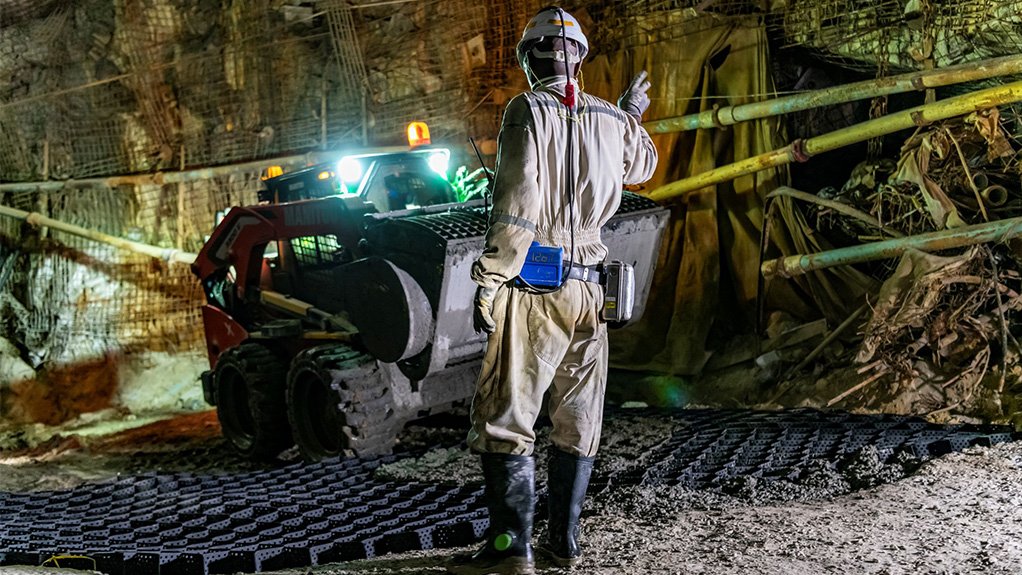JOHANNESBURG (miningweekly.com) – In addition to physical safety, gold mining company Gold Fields said on Thursday that it is prioritising the mental health and wellbeing of its employees, following an independent workplace culture review.
The Johannesburg- and New York-listed company, which has just been ranked number 1 in the Sunday Times Top 100 as a result of returning 668% to its shareholders over five years, said harmful behaviours would not be tolerated.
“We are implementing the 22 remedial recommendations,” the company headed by interim CEO Martin Preece stated in a release to Mining Weekly.
The recommendations have been made as part of the review carried out by Elizabeth Broderick & Co to understand the lived experience of its people.
“We will commission another independent review within three years to assess our progress and are committed to full transparency with stakeholders in this regard,” Gold Fields stated.
Third-quarter production was 542 000 oz of gold at an all-in sustaining cost (AISC) of $1 381/oz and an all-in cost (AIC) of $1 622 oz.
Third-quarter AISC of $1 381/oz was 30% higher year-on-year and 8% higher quarter-on-quarter.
Gold Fields said it remained on track to meet the original production and cost guidance provided in February 2023, both at guided and forecast exchange rates. Attributable gold equivalent production is expected to be between 2.25-million ounces and 2.3-million ounces, compared with 2.32-million ounces in 2022. AIC is expected to be $1 480/oz to $1 520/oz.
In South Africa, the availability, attraction and retention of key skills, including artisans and long-hole stoping rig operators, continued to impact fleet availability and utilisation and consequently performance at the South Deep mine, west of Johannesburg.
The South Africa region reported 8%-lower managed production of 81 000 oz year-on-year.
AIC of $1 309/oz was up 21% owing to lower gold sold and above inflation increases in costs, but pleasingly reduced by 12% quarter-on-quarter.
In Australia, skills shortages and lower grades negatively impacted production volumes, with the Granny Smith, St Ives and Agnew gold mines also being hit by ventilation problems.
In Ghana, the 185 000 oz in the third quarter on a managed basis, was down 14% year-on-year mainly owing to lower production at Damang in line with the mine plan. Quarter-on-quarter volumes were 9% down owing to lower yields at Tarkwa as the mine treated more ore from lower-grade stockpiles compared with previous quarters. AIC for the Ghana operations of $1 503/oz was up 33% year-on-year and was 22% higher quarter-on-quarter owing to the lower gold volumes.
Negotiation progress with the Ghana government to obtain approval for the proposed Tarkwa/Iduapriem joint venture with AngloGold Ashanti, which Gold Fields believes will create value for all stakeholders, has been slower than expected.
In Peru, production on a managed basis at Cerro Corona was a 14%-lower gold equivalent of 52 000 oz owing mainly to lower gold and copper grades processed and lower metallurgical recoveries in line with the mining plan. AIC of $824/oz was up 20% year-on-year.
In Chile, construction progress of the Salares Norte project stood at 97% at the end of September compared with 94% at the end of June. Total third-quarter spend on the project was $111-million made up of $86-million in capital expenditure, $5-million in exploration expenditure and $20-million investment in working capital.
In Canada, Gold Fields’ partnership with Osisko Mining to develop the Windfall Project has led to the submission of the project’s environmental impact assessment, which is expected to take 12 – 18 months for approval, at which stage construction activities will commence. Meanwhile, third-quarter pre-construction has required an expenditure of $25-million.
EMAIL THIS ARTICLE SAVE THIS ARTICLE ARTICLE ENQUIRY
To subscribe email subscriptions@creamermedia.co.za or click here
To advertise email advertising@creamermedia.co.za or click here











